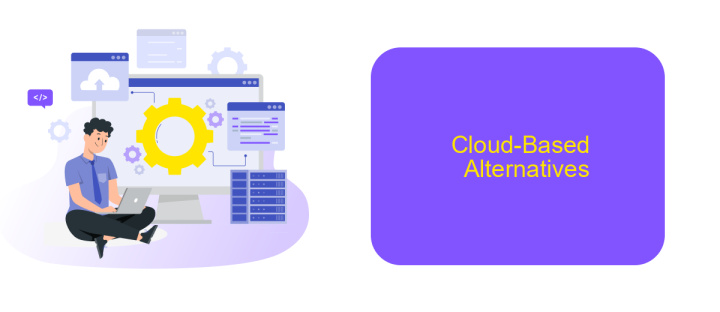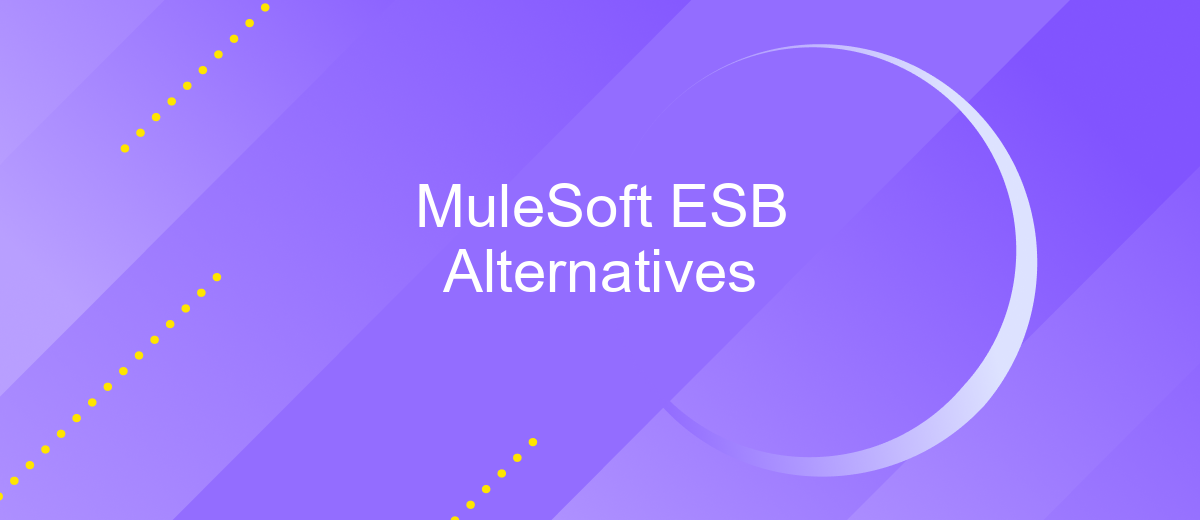MuleSoft ESB Alternatives
When considering integration solutions, MuleSoft ESB is often a top choice due to its robust capabilities. However, businesses may seek alternatives that better align with their specific needs, budget, or technical environment. This article explores several compelling MuleSoft ESB alternatives, highlighting their features, benefits, and potential use cases to help you make an informed decision for your integration strategy.
Alternatives by Functionality
When considering alternatives to MuleSoft ESB, it's essential to evaluate the functionality each tool offers to ensure it meets your integration needs. Several platforms provide robust capabilities for connecting diverse systems, automating workflows, and managing data efficiently.
- ApiX-Drive: A user-friendly platform that allows you to set up integrations without any coding knowledge. It supports a wide range of applications and automates data transfer between them seamlessly.
- Apache Camel: An open-source integration framework that provides a versatile routing and mediation engine, suitable for various enterprise integration patterns.
- WSO2 Enterprise Integrator: A comprehensive solution that offers tools for service orchestration, message brokering, and data integration, ideal for complex enterprise environments.
- Talend Open Studio: A powerful open-source data integration tool that simplifies ETL processes and supports extensive connectivity options for various data sources.
- Zapier: A popular automation tool that connects apps and services, allowing you to automate workflows with a straightforward, no-code interface.
Each of these alternatives offers unique features and benefits, making them suitable for different integration scenarios. ApiX-Drive, for example, stands out for its ease of use and extensive support for various applications, making it an excellent choice for businesses looking to streamline their integration processes without extensive technical expertise.
Alternatives by Deployment Model

When considering alternatives to MuleSoft ESB based on deployment models, it's essential to explore both cloud-based and on-premises options. Cloud-based integration platforms like ApiX-Drive offer a flexible and scalable solution for businesses looking to streamline their integration processes without the need for extensive infrastructure investments. ApiX-Drive provides an intuitive interface and a wide range of pre-built connectors, making it easier to integrate various applications and services seamlessly. This platform is ideal for organizations that prioritize quick deployment, cost-effectiveness, and ease of use.
On the other hand, for companies that require more control over their integration environment, on-premises solutions might be more suitable. These solutions allow for greater customization and security, as the integration infrastructure is managed within the organization's own data centers. While on-premises deployments can be more resource-intensive and require a higher level of technical expertise, they offer unparalleled control and can be tailored to meet specific business needs. Evaluating these deployment models can help organizations choose the most appropriate alternative to MuleSoft ESB based on their unique requirements and constraints.
Open Source Alternatives

When considering alternatives to MuleSoft ESB, open-source solutions can offer robust capabilities without the associated costs. These tools often provide flexibility and a strong community support system, making them a viable option for many organizations.
- Apache Camel: A powerful integration framework that allows you to define routing and mediation rules in a variety of domain-specific languages.
- Talend Open Studio: An open-source data integration tool that simplifies ETL (Extract, Transform, Load) processes and offers extensive connectivity options.
- WSO2 Enterprise Integrator: A comprehensive integration solution with capabilities for API management, data integration, and more.
- ApiX-Drive: A service that facilitates the setup of integrations between different applications, making it easier to automate workflows and data transfers.
These open-source alternatives provide a range of features that can meet the needs of various integration scenarios. Whether you're looking for a flexible framework like Apache Camel or a user-friendly service like ApiX-Drive, there's likely an option that fits your requirements. Exploring these tools can help you find a cost-effective solution for your integration needs.
Cloud-Based Alternatives

When considering cloud-based alternatives to MuleSoft ESB, it's important to explore solutions that offer seamless integration capabilities, scalability, and ease of use. One such alternative is ApiX-Drive, a versatile platform designed to streamline and automate integration processes between various applications and services.
ApiX-Drive simplifies the integration setup, allowing users to connect different systems without the need for extensive coding knowledge. This makes it accessible for businesses of all sizes, from startups to large enterprises, looking to enhance their operational efficiency.
- Automated workflows to eliminate manual tasks
- Real-time data synchronization across platforms
- User-friendly interface for easy configuration
- Scalability to support growing business needs
- Comprehensive support for various applications and services
By leveraging ApiX-Drive, organizations can achieve a higher level of integration and automation, reducing the time and effort required to manage multiple systems. This cloud-based solution ensures that data flows smoothly and accurately, enabling businesses to focus on their core activities and drive growth.
Hybrid Alternatives
For businesses seeking a hybrid integration solution, ApiX-Drive offers a compelling alternative to MuleSoft ESB. ApiX-Drive excels in connecting diverse systems and applications, enabling seamless data flow between on-premise and cloud environments. Its user-friendly interface allows even non-technical users to set up integrations effortlessly, reducing dependency on specialized IT staff. This platform supports a wide range of applications, ensuring that your business can integrate virtually any system with ease.
One of the standout features of ApiX-Drive is its robust library of pre-built connectors, which significantly accelerates the integration process. Additionally, ApiX-Drive provides real-time data synchronization and monitoring, ensuring that your integrations are always up-to-date and functioning optimally. This hybrid approach not only enhances operational efficiency but also offers the flexibility to adapt to changing business needs. With ApiX-Drive, businesses can achieve a scalable and reliable integration solution that bridges the gap between traditional and modern systems.


FAQ
What are some common alternatives to MuleSoft ESB?
Why might a business look for an alternative to MuleSoft ESB?
How do open-source ESB solutions compare to commercial ones like MuleSoft?
What factors should be considered when choosing an ESB alternative?
Are there services that help with the automation and integration setup for ESB alternatives?
Apix-Drive is a universal tool that will quickly streamline any workflow, freeing you from routine and possible financial losses. Try ApiX-Drive in action and see how useful it is for you personally. In the meantime, when you are setting up connections between systems, think about where you are investing your free time, because now you will have much more of it.

